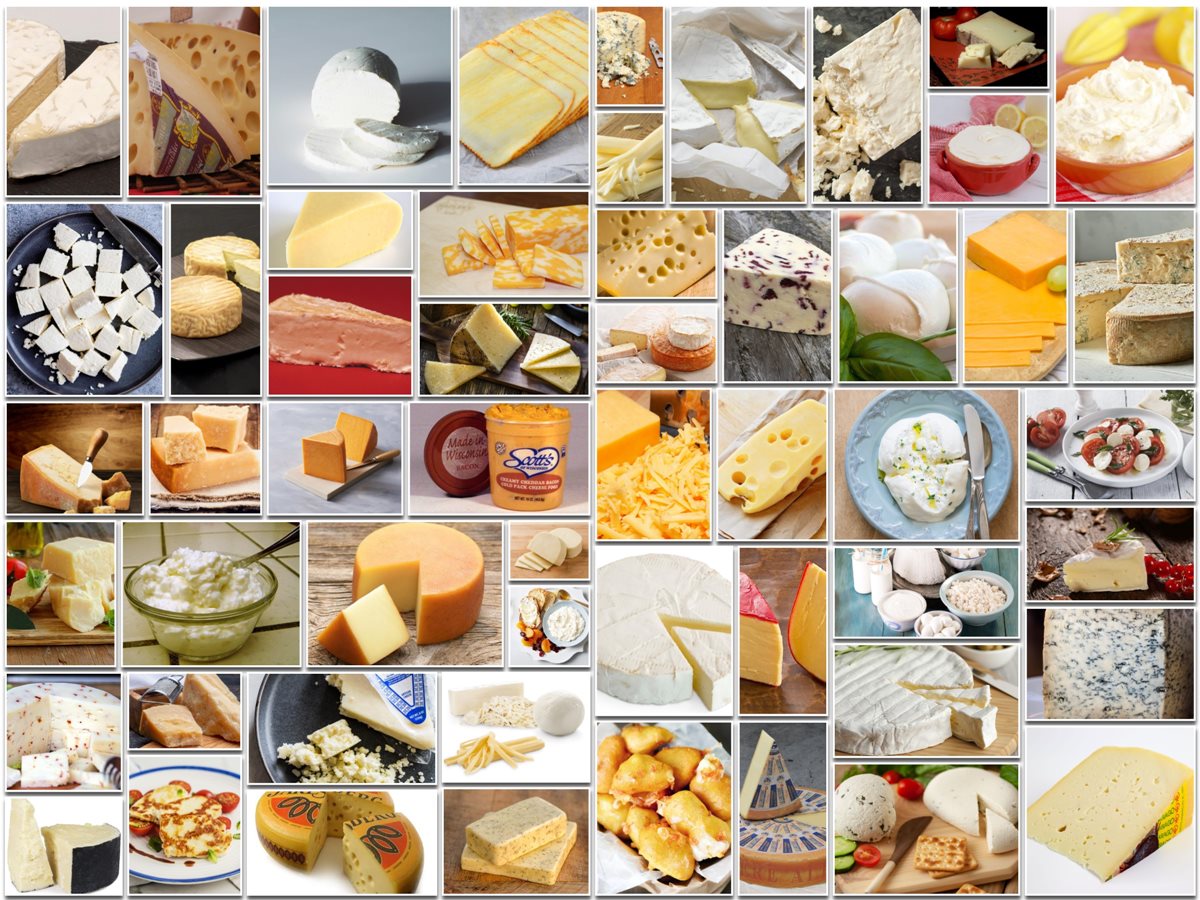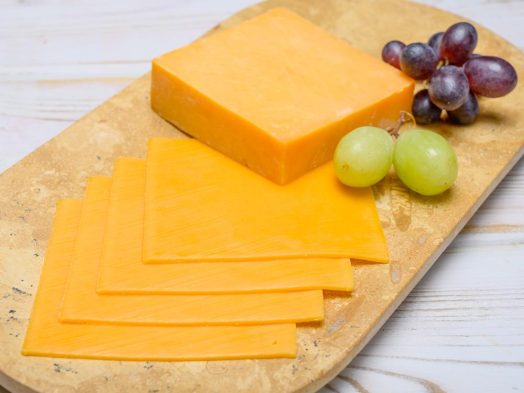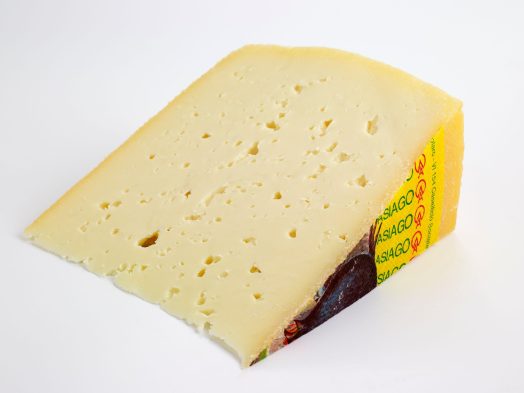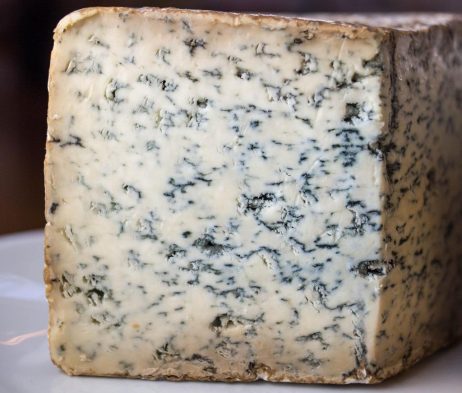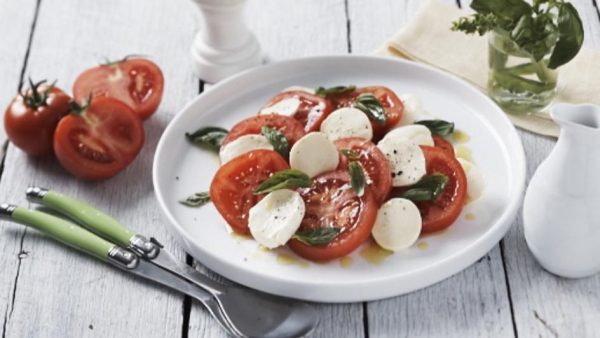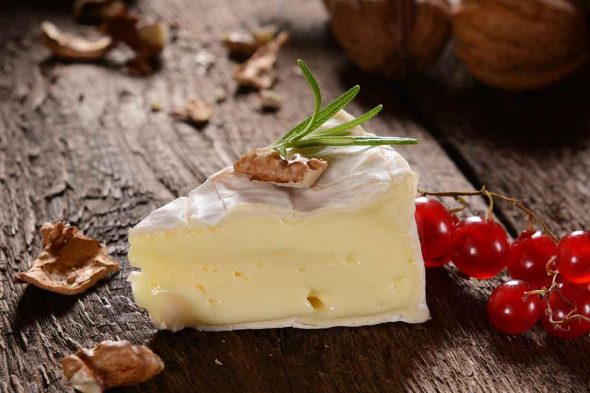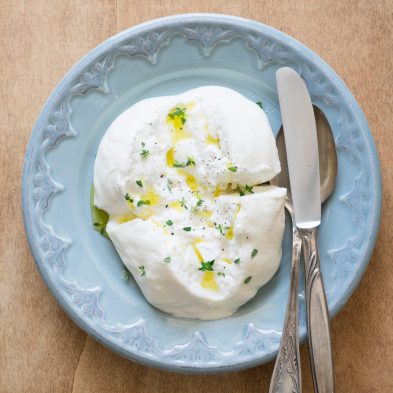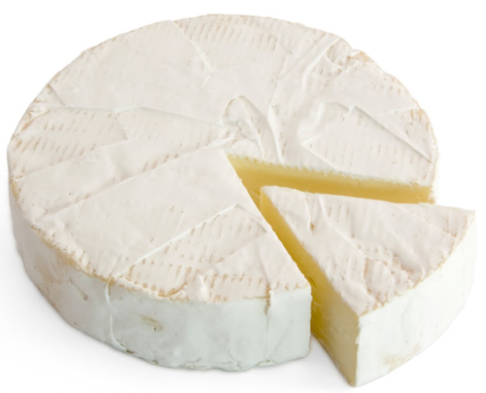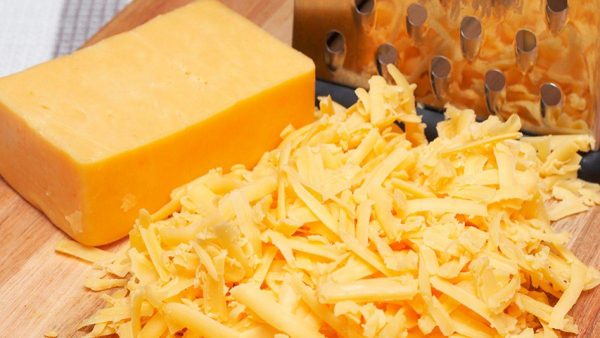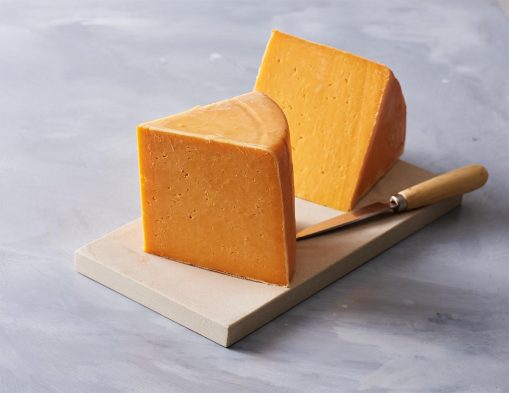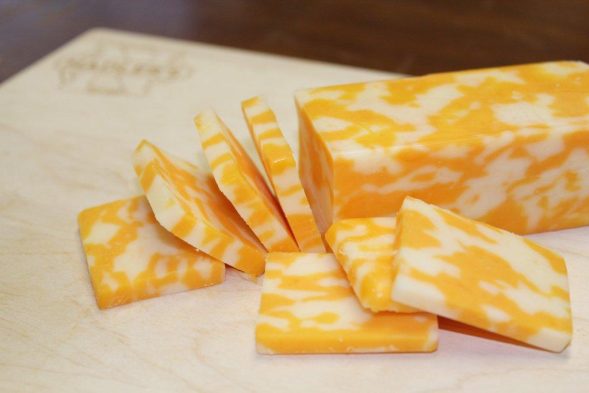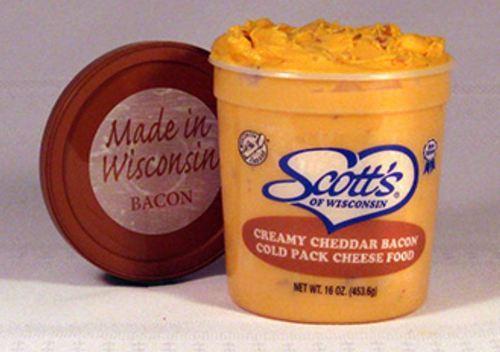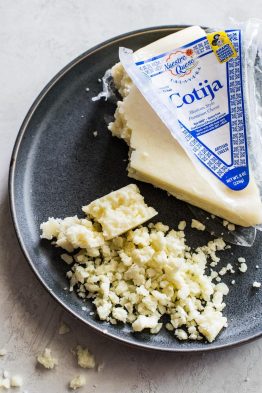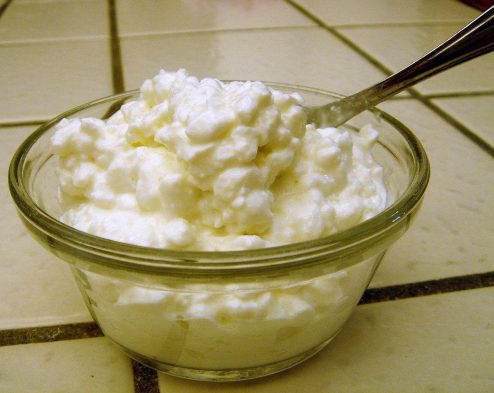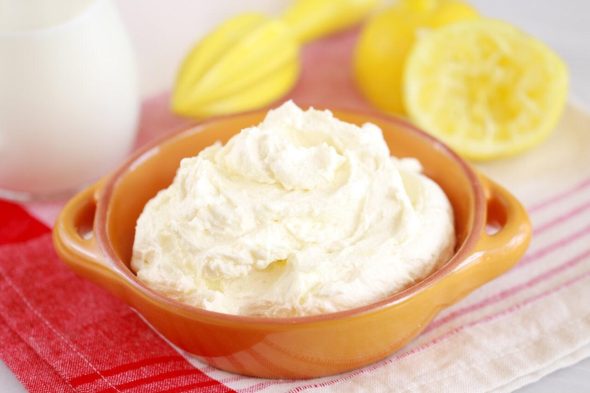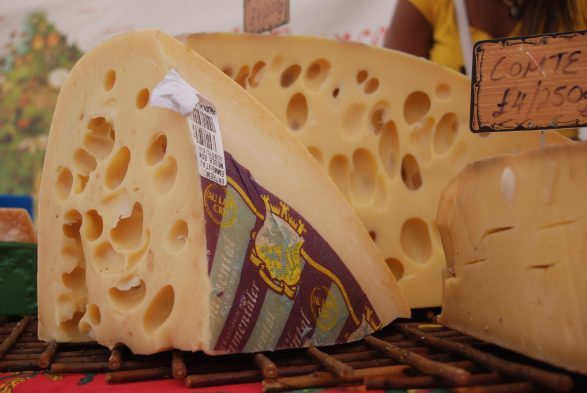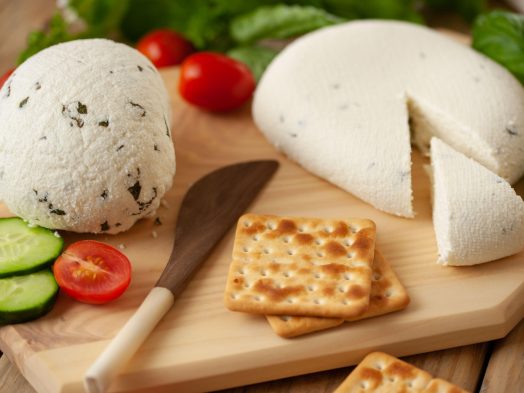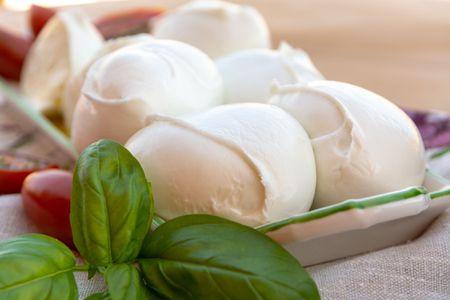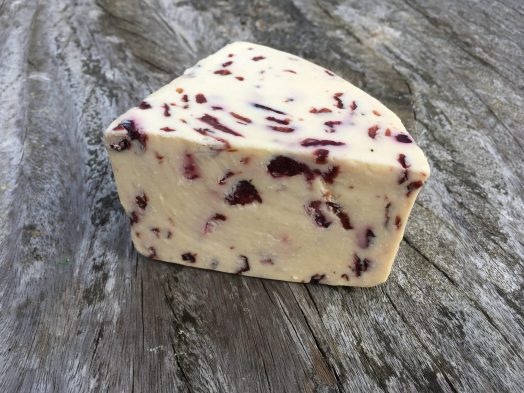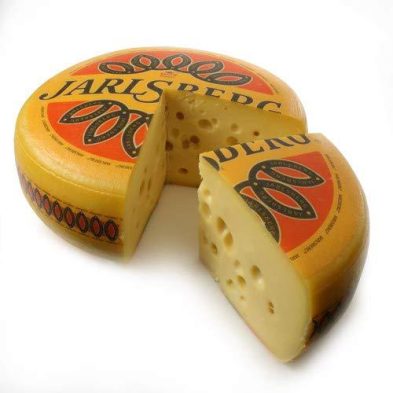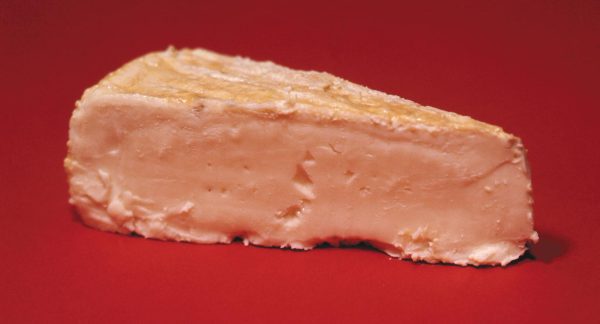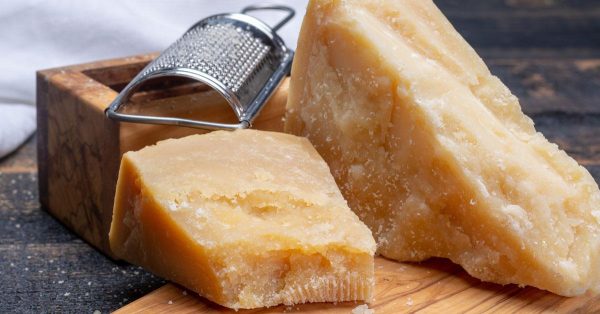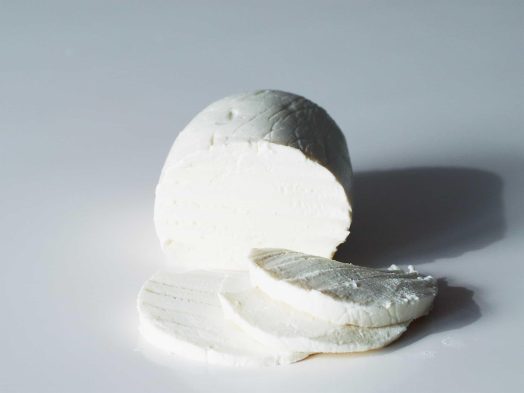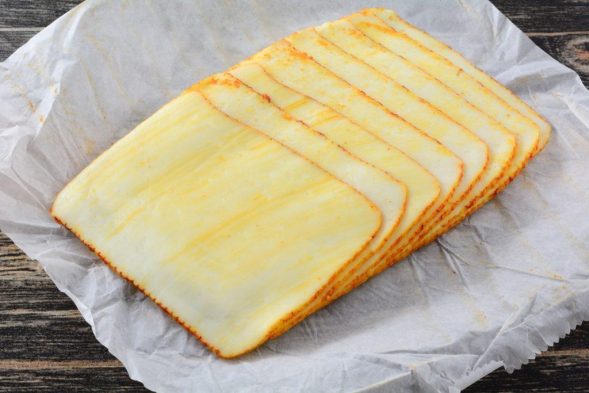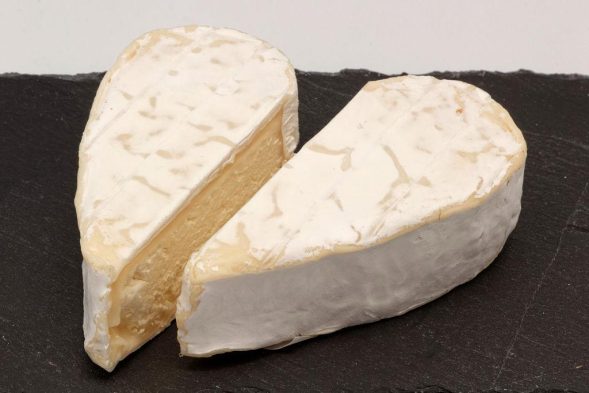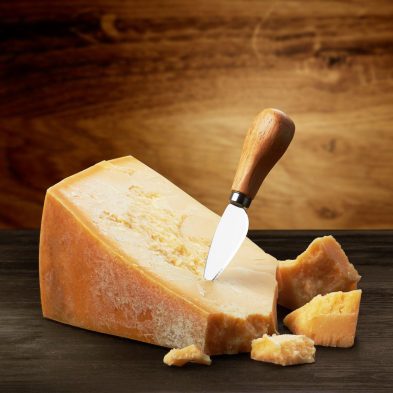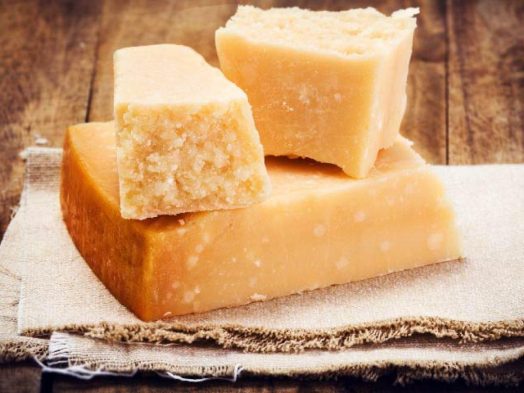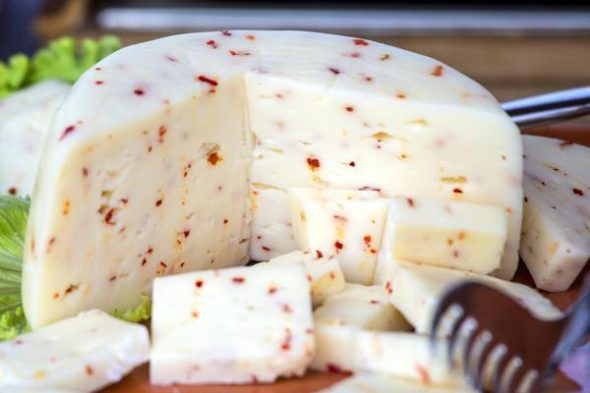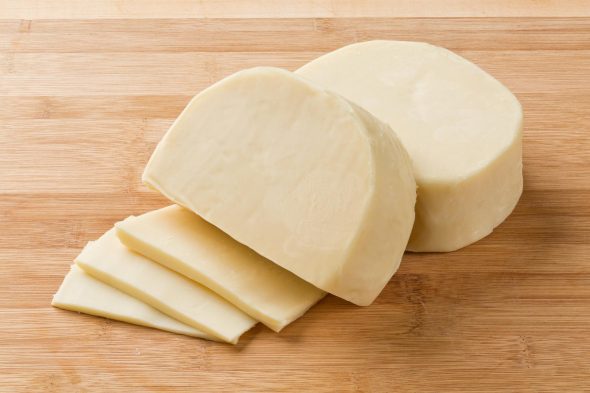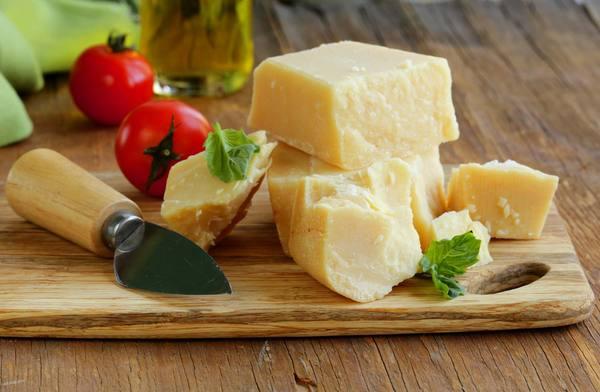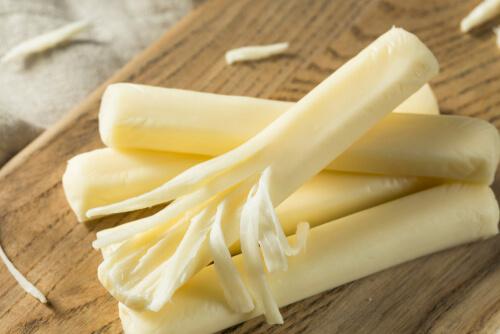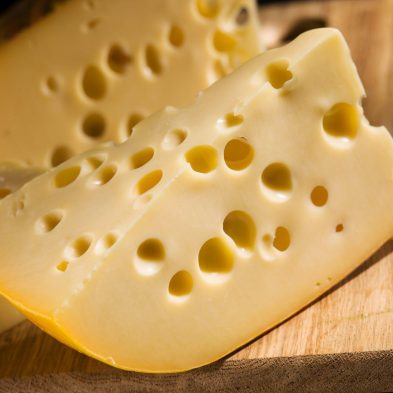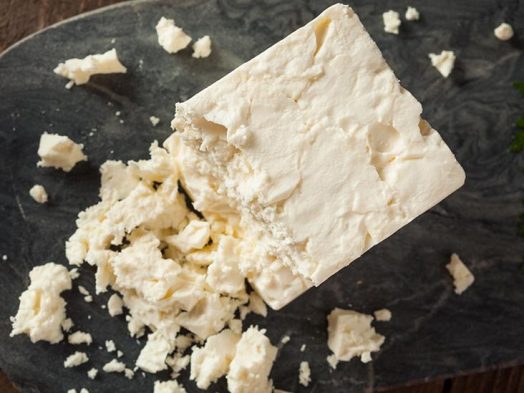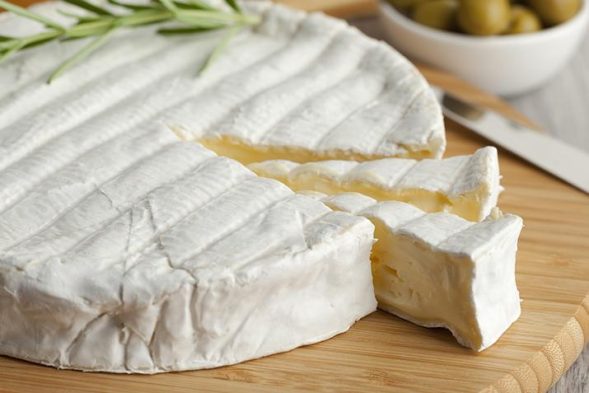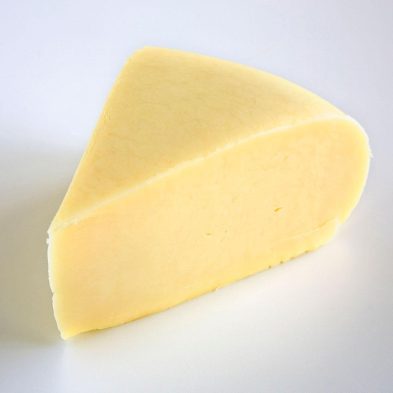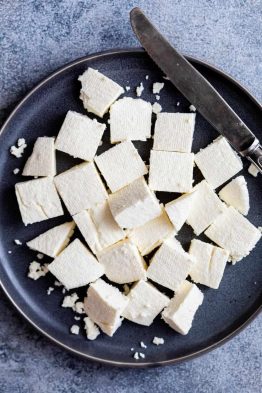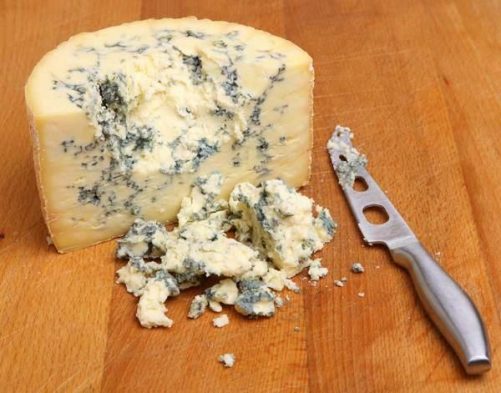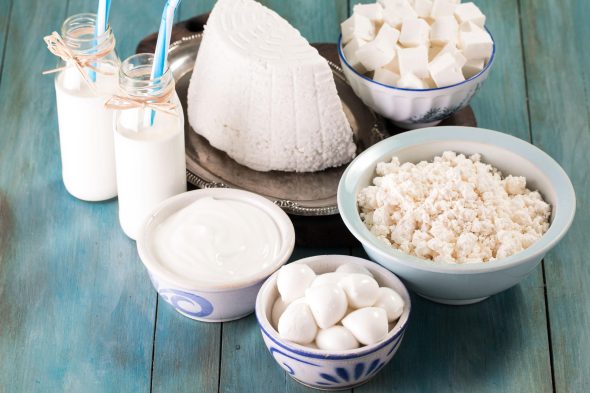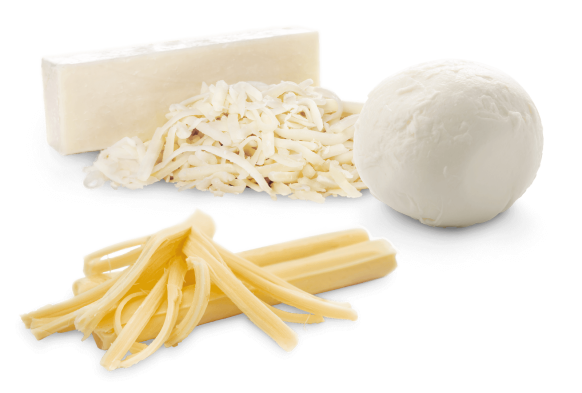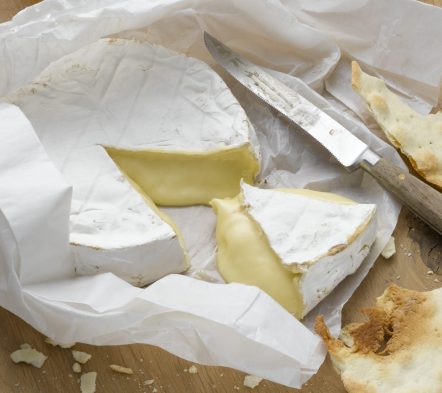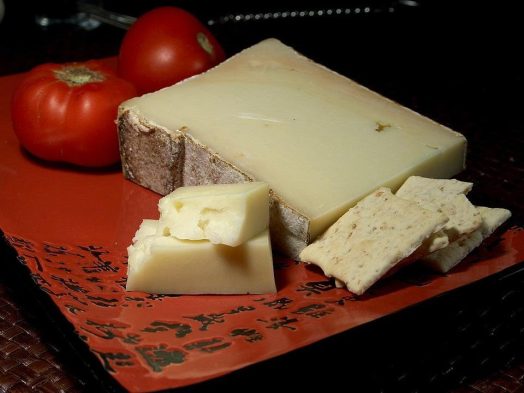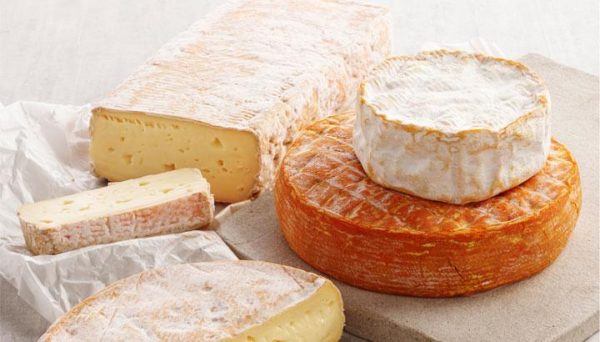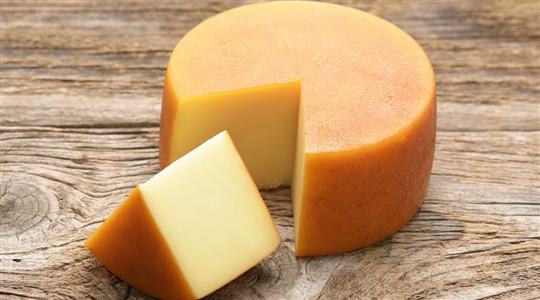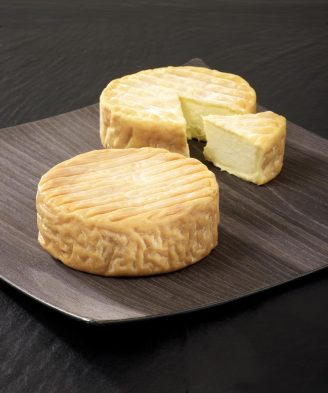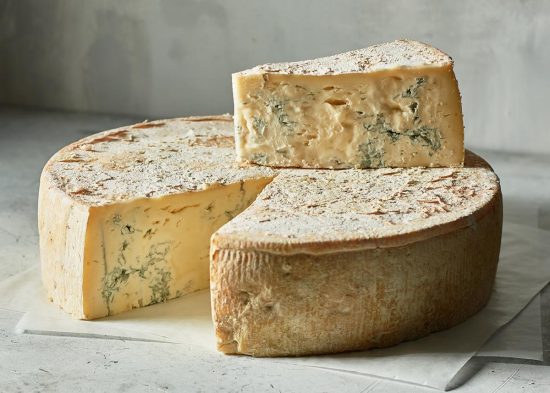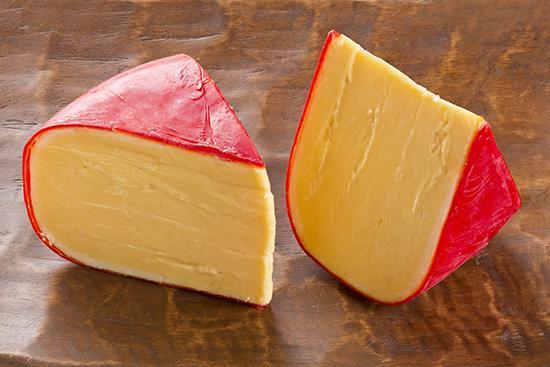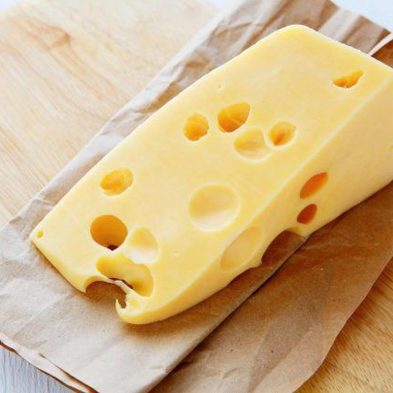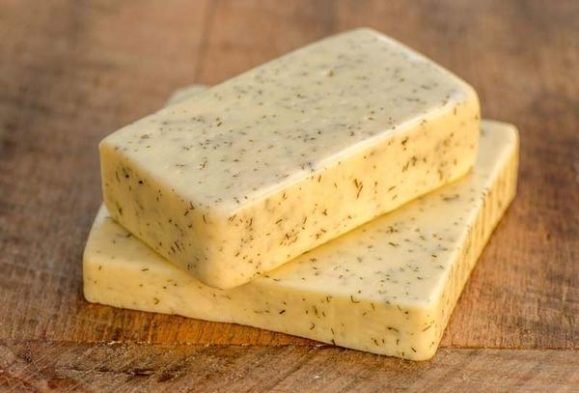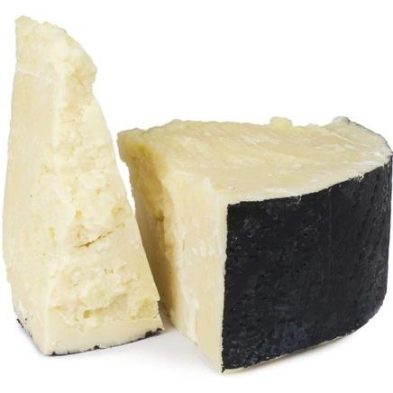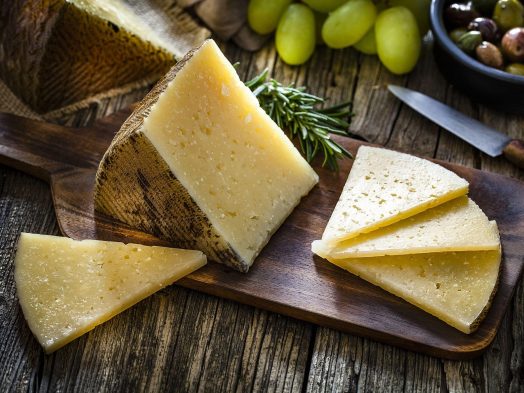Cheese is always a joy, whether eaten on its own, with crackers, sprinkled on pastas, or spread between slices of bread. Without the necessary cheese, our beloved American club sandwiches, paninis, pizzas, and Greek specialties like spanakopitas and bougatsas would be incomplete.
The fact that different types of cheese are manufactured in different parts of the world might be one of the causes for the wide range of variations. Various cheese-making processes have evolved in response to changes in technology and market demand.
Taste, color, fragrance, flavor, texture, softness, mould content, gas holes, and shelf life are all varied features of various cheeses.
If you enjoy cheese and can’t stop yourself from adding it to your diet, there are a few varieties of cheese you should be aware of.
Different Types of Cheese Names With Pictures
Here is the latest list of all types of cheese names with pictures and images that you should know about.
1. American Cheese
American cheese is a creamy, smooth mix of natural cheeses. Individually wrapped cheese slices, tiny pre-sliced blocks, and big blocks are among the options. It’s easy to melt.
2. Asiago Cheese
Asiago is a nutty-flavored cheese that is available in two varieties: fresh and aged. Fresh Asiago is off-white in color and smoother and gentler than mature Asiago, which is yellowish and crumbly. Asiago can be grated, melted, or sliced depending on its age.
3. Blue Cheese
The term “blue” refers to cheeses produced with Penicillium cultures, which produce “blue” patches or veins. Blue cheese has an unique odour and an acquired flavor, according to some. Blue cheeses can be crumbed or melted and consumed.
4. Bocconcini Cheese
Bocconcini are egg-sized mozzarella cheese balls that mean “small nibbles.” The cheese has a sweet, buttery flavor and is white, rindless, unripened, and stretchy in texture. Bocconcini can be eaten raw or melted in a sauce.
5. Brie Cheese
Brie is a soft white cheese with a mild flavor. It’s available in a wheel or a little wooden box, and it’s a fantastic dessert cheese. It’s best served at room temperature, according to experts.
6. Burrata Cheese
Burrata is a fresh cheese with a thin layer of cheese on the interior and a combination of stringy curd and fresh cream. It has a robust taste that complements salads, crusty bread, and Italian cuisine.
7. Camembert Cheese
Camembert cheese is tasteless, hard, and crumbly when fresh, but it becomes smoother with a flowing centre as it matures. It boasts a delicious, buttery flavor, as well as a chewable rind.
8. Cheddar Cheese
This popular cheese is available in a variety of flavors. Its color ranges from natural white to pumpkin orange, and its flavor ranges from creamy to sharp. The texture of Cheddar cheese varies as it matures, becoming drier and crumblier.
9. Cheese Curds
Cheese curds, which are popular in the United States and Canada, have a springy or rubbery texture and a variety of flavors. They’re delicious as a snack or in dishes like Poutine.
10. Colby Cheese
While Colby has a similar appearance to Cheddar, it has a softer texture and a less acidic flavor. It’s sometimes mixed with other cheeses, such as Monterey Jack, to produce Colby Jack.
11. Colby-Jack Cheese
This orange and white cheese is made from orange Colby and white Monterey Jack cheeses. Because it melts well, it’s frequently used over grilled sandwiches, sautéed veggies, and other warm meals.
12. Cold-Pack Cheese
A mixture of two or more varieties of fresh and aged natural cheeses is known as Cold Pack cheese. It comes in tubs, balls, logs, and various packaging and is soft, creamy, and spreadable.
13. Cotija Cheese
This firm, crumbly cheese starts out mild and salty, but as it matures, it becomes tangier. Because it doesn’t melt, it’s perfect for grating over soups, tacos, tostadas, and other dishes.
14. Cottage Cheese
Cottage cheese is created by separating the curds from the whey, and it isn’t pressed like other cheeses, so it stays creamy and lumpy. It’s delicious on its own, with fruit, on toast, and in a variety of other ways.
15. Cream Cheese
Cream cheese is created by mixing milk with cream. It comes in a block and spreads easily, sometimes with additional seasonings. It has a mild, somewhat acidic taste.
16. Emmental Cheese
Emmental is most commonly associated with the term “Swiss cheese” (also known as Emmentaler). Bubbles develop when the cheese curds are cooked and pushed together, leaving holes in the cheese. It’s sweet and zesty, and it melts well.
17. Farmer’s Cheese
Farmer’s cheese is created by squeezing cottage cheese to eliminate excess liquid. After that, you may wrap it with herbs or smoked meats. Its design changes based on who made it.
18. Feta Cheese
Feta is typically produced from sheep’s or goat’s milk, although cow’s milk can also be used. It has an acidic, crumbly texture.
19. Fresh Mozzarella Cheese
Fresh mozzarella is a type of fresh cheese prepared by stretching and rolling cheese curds into balls. They’re packaged with water to keep them fresh.
20. Gorgonzola Cheese
Gorgonzola is one of the oldest blue cheeses in the world. Its texture is crumbly and soft, and its flavor ranges from creamy to sharp.
21. Gouda Cheese
Gouda is a semi-hard to hard cheese with a pleasant flavor that comes in a variety of varieties based on its age. Grated, sliced, cubed, and melted gouda are all options.
22. Wensleydale Cheese
Wensleydale is a well-known British cheese that originated in the North Yorkshire village of Wensleydale. Wensleydale is a crumbly white to pale-yellow cheese with a white to pale-yellow appearance. Because of the tartness of the flavor, it is frequently combined with fruit, particularly cranberries and apricots. Although both white and blue Wensleydale are available, white Wensleydale is far more common these days.
23. Ricotta Cheese
It is one of the most popular types of cheese in the world, with a mild, slightly sweet, and creamy texture. Ricotta has a lot of nutritional value as well. For starters, it contains fewer calories than most other cheeses and is a good source of protein. Ricotta is also available in low-fat versions, which are popular among athletes and bodybuilders due to their high protein content.
24. Provolone Cheese
Provolone is a popular Italian cheese that comes in a variety of flavors, ranging from mild and mild to strong and sharp, depending on how it’s made and aged. The cheese is made with cow’s milk and originated in Southern Italy in the 1800s. Smoked provolone cheese, which has an extra rich and smoky flavor, is also available.
25. Jarlsberg Cheese
Jarlsberg is a mild, semi-soft cheese with open and irregular holes that resemble Emmental. This melted cheese may be used in a variety of hot meals, sandwiches, and other applications.
26. Limburger Cheese
Limburger is a semi-soft cheese with a moderate taste despite its strong odour. The cheese pairs beautifully with dark rye bread and onion as it softens with age.
27. Parmigiano-Reggiano (Parmesan) Cheese
Parmigiano-Reggiano, the third Italian cheese in a row, is a crumbly, hard cheese with a strong, robust flavor. The cheese is commonly referred to as Parmesan, and it has a protected designation of origin. This designation indicates that the cheese can only come from the region in Northern Italy where it was created. Parmesan cheese is usually sold unpasteurized and aged for one to three years. As a result, it has a strong flavor that can be overwhelming when eaten alone. Parmesan is typically used as a condiment for a variety of dishes and is available in granular or powdered form.
28. Monterey Jack Cheese
Monterey Jack melts nicely and has a light buttery taste with a hint of acidity.
29. Mozzarella Cheese
This mozzarella is pulled and kneaded into strands, similar to fresh mozzarella, which contributes to its stretchability. It is often used on pizza since it melts well.
30. Muenster Cheese
Muenster is a pale yellow cheese with an orange peel that is smooth and creamy. It has a wide range of flavors, from mild to sharp. It may be used in sandwiches, cheeseburgers, and other dishes since it melts well.
31. Neufchatel Cheese
This soft, white cheese resembles Camembert but comes in a variety of shapes, sizes, and textures. Neufchatel has a gritty texture, unlike comparable cheeses.
32. Parmesan Cheese
Parmesan cheese has a firm, gritty texture with a tangy, nutty flavor. It may be grated over pastas, used to soups, and other dishes.
33. Pepper Jack Cheese
Pepper Jack is a Monterey Jack variation that has been spiced up with peppers and other veggies and seasonings. This semi-soft cheese is both peppery and buttery. As a result, it complements quesadillas, hamburgers, and other dishes.
34. Provolone Cheese
This semi-hard cheese has a sweetish flavor and is pale yellow to white in color. It’s available in both smoked and unsmoked forms, and it’s a popular sandwich filling for many people.
35. Ricotta Cheese
This soft cheese has a smoother texture than cottage cheese and is firm but not solid. It has a mild taste that complements anything from lasagna to cheesecake.
36. Romano Cheese
When produced with cow’s milk, this hard cheese has a tangier flavor than Parmesan. It’s commonly grated on pasta, salads, and sauces.
37. String Cheese
It’s a sort of mozzarella that’s traditionally produced into tiny logs that can be pulled apart like threads. It’s available in a number of flavors.
38. Swiss Cheese
The term “Swiss” refers to a variety of cheese that includes Emmental and baby Swiss types. It’s easy to spot because to its holes and light or pale yellow hue. It’s delicious with fruits and veggies, as well as on sandwiches.
39. Feta Cheese
Feta cheese is the most popular of all Greek cheeses. It is protected by European Union regulation, and only cheeses made in Macedonia, Thessaly, Thrace, Central Mainland Greece, Lesvos, and the Peloponnese can be referred to as feta.
Feta is prepared from pasteurised or unpasteurized milk from goats and lambs that grazed on pastures in the Grecian areas indicated above. This cheese’s texture and hardness differ from area to region. It might also differ depending on your age.
Feta has a sour, salty flavor that can be diminished by washing it under cold water. It may be used in a variety of Greek meals, including Greek salad and spanakopita, which are also available in our Raleigh bakery. It’s also great on pizzas and pies. It’s delicious with olive oil, roasted peppers, and almonds on top. It goes nicely with beer as well as some wines.
40. Brie Cheese
The most well-known French cheese is Brie. It was offered as one of the offerings to the French kings and is regarded as the “queen of cheeses.” It has a smooth texture and is named after the French province of Brie, where it originated.
It’s prepared from raw cow’s milk and is light in color with a hint of grey behind the rind. It can have a variety of flavors depending on the components used in the manufacturing process. It’s a dessert cheese that’s best enjoyed at room temperature.
41. Monterey Jack Cheese
It has a mild flavor, a light creamy color, and melts easily, making it ideal for a variety of applications. The cheese has a semi-hard texture and is made from cow’s milk. According to the “true storey of Monterey Jack,” this well-known cheese was first made in the 1700s.
42. Paneer Cheese
Paneer is an Indian fresh cheese that is typically served in small cubes. Paneer resembles tofu in appearance and texture, especially when used in cooked dishes. Paneer is very similar to cottage cheese in terms of how it’s made and its overall characteristics. Paneer, on the other hand, is not salted and has a firmer texture. It’s also quite bland on its own, which lends itself to the wide range of recipes in which paneer appears. Paneer is frequently consumed in India after being spiced or used in curries such as this one.
43. Stilton Cheese
Blue Stilton is one of England’s most well-known cheeses, with producers now exporting it all over the world. Stilton has a long and illustrious history, having been a staple of the English diet since the early 1800s. While the cheese is flavorful and strong, it isn’t as sharp as other blue cheese varieties and has a more mellow flavor. The cheese also has some interesting nutritional benefits, including being a good source of vitamin K2.
44. Fresh Cheese
Because they aren’t matured, fresh cheeses are sometimes known as “unripened” cheeses. They’re soft, spreadable cheeses with mild tastes and creamy textures. Fresh cheeses, like other cheeses, can be produced using various types of milk and varied levels of salt, giving them distinct tastes.
Fresh cheese texture varies depending on how much whey and moisture is removed from the final product, ranging from soupy (cottage cheese) to crumbly (hard cheese) (queso fresco).
Wright, who produces her own cottage cheese by curdling the milk with lemon juice rather than rennet, adds, “You can create fresh cheeses on your kitchen counter.”
45. Pasta Filata Cheese
This category relates to the traditional Italian stretched-curd cheese preparation that is well-known throughout the country. Pasta Filata means “spun paste” in Italian. After steeping in a hot water bath, fresh cheese curds are stretched, twisted, or kneaded into various forms.
The most well-known Pasta Filata is Mozzarella. The cheese’s protein structure is aligned throughout the heating and kneading process, allowing it to expand more when melted ” ideal for pizza! Spun mozzarella balls can be kept in brine or water for immediate consumption, or stacked into bricks and aged for longer storage.
Provolone and other Pasta Filata cheeses are tied and air-cured for weeks or months. For additional taste, Pasta Filata cheeses can be smoked.
46. Soft-Ripened (Bloomy Rind) Cheese
The interior of these cheeses may be runnier than the outside since they mature from the outside in. Brie and Camembert, both from France, are the most well-known soft-ripened cheeses. A thin white rind of growing mould is the defining feature of these creamy, earthy cheeses. Mold, to be precise.
Soft-ripened cheeses are exposed to certain mould strains, such as Penicillium camemberti, that operate from the outside to convert lipids into aromatic chemicals called ketones over a brief ageing time. Camembert has a mushroomy, ammonia edge because to the ketones produced by P. camemberti.
Soft-ripened cheese, like all cheese, is best consumed at room temperature to optimise the taste profile, according to Wright. However, if it smells too strongly of ammonia, discard it.
47. Semi-Soft Cheese
This category is more concerned with the texture of the cheese than with the process of making it. Semi-soft cheeses all have a short maturing period, usually just a few months, which results in a moist, pliable cheese with a creamy texture. Havarti is a mild-flavored semi-soft cheese with a long history.
48. Washed-Rind Cheese
It’s at this point that things start to get interesting. Some of the worst cheeses in the world are washed-rind. It’s no coincidence that the famous (and vilified) Limburger cheese smells like old sneakers.
For about two months, the stinkiest washed-rind cheeses are dipped in seawater, beer, wine, or liquor twice a week. What’s the point of washing the rind in the first place? According to Wright, monks began the practise to prevent mould from growing on their cheese. They were able to kill the mould as well as promote the growth of Brevibacterium linens bacteria by washing it with brine or beer.
49. Blue Cheese
This is a great category to participate in. Anyone who has seen the spidery blue veins of ripe Roquefort or Stilton cheese has wondered where it comes from. Mold is, once more, the answer.
50. Semi-Hard Cheese
Cheddar is a popular semi-hard cheese that makes up the majority of the market. Semi-hard cheeses derive their flavor from two factors: the bacteria strain added to the milk and the length of time the cheese has been aged.
Fermentation is a process that occurs in the making of cheese. When bacteria are added to milk, they begin converting the milk’s natural sugars (lactose) into lactic acid. Lactic acid contributes to the tangy flavor of cheese. Other bacteria aid the formation of complex flavor proteins. Other bacteria produce carbon dioxide gas, which is what gives Swiss cheese its distinctive holes.
To make various cheese varieties, different strains of bacteria are used as “starter cultures.” The bacteria that makes cheddar cheese is Lactococcus lactis ssp. cremoris. Swiss is made from Lactobacillus helveticus.
51. Camembert Cheese
This cheese hails from Northern France, just like Brie. Camembert is a town in the Normandy region of France that is named after the cheese. Although Camembert is less creamy than Brie, it compensates by increasing the flavor intensity.
Camembert, for example, is ripened/fermented in smaller batches, allowing for a faster process. Camembert will age faster (and be more pungent) as a result of this process than a Brie of comparable age. Camembert has a stronger and deeper flavor than Brie. It has a stronger flavor and can occasionally have sour undertones.
52. Cottage Cheese
Cottage cheese is distinct from most other types, with ricotta being the closest relative. The nutritional profile is very different from other types of cheese due to the different manufacturing process. It contains very little fat and thus has a low calorie count. As a result, cottage cheese is a great choice for those looking for a high-protein snack. On the downside, some people dislike cottage cheese because of its appearance. They might be right because the lumpy texture reminds them of cold rice pudding. It has a mild, salty, and creamy flavor, though.
53. Epoisses Cheese
Epoisses is a strong-smelling, highly flavorful French cheese. It’s a washed-rind cheese with a darker orange rind than brie and camembert. The cheese is soft and creamy, in addition to being flavorful. The majority of Epoisses cheese is made without the use of pasteurisation. Only pasteurised Epoisses are sold in the United States due to food safety regulations.
54. Gorgonzola Cheese
Gorgonzola is a flavorful Italian cheese with a strong presence. Dolce and Piccante are the two most common types of this cheese. Dolce Gorgonzola is a very soft, creamy, almost spreadable cheese that has been aged for less than three months. It has a mild and slightly sweet flavor, which is unusual for blue cheese. The key words there are “for a blue cheese” because it is still sharp and pungent when compared to other cheeses. Piccante Gorgonzola, on the other hand, ages for six to twelve months, and you can taste the difference when you first try it. The flavor is intensely pungent, with a semi-hard and crumbly texture. As a result, it’s best served with food rather than consumed on its own.
55. Gouda Cheese
Gouda is a Dutch cheese made in the southern Dutch town of Gouda. Gouda has a wide range of flavor, texture, and taste. Two different types of Gouda can taste completely different due to large differences in ageing time (ranging from one month to 36 months). Younger Gouda has a mild flavor and a smooth, semi-hard texture, whereas older Gouda is crumbly and has a stronger flavor. Gouda is divided into six grades, similar to Cheddar, based on its age.
56. Gruyère Cheese
Gruyère is a Swiss cheese named after the medieval Swiss town of Gruyères in Fribourg. Gruyère is aged 6 to 12 months, and the longer ageing time gives it its tough texture. The flavor of the cheese develops as it matures. Gruyère can be eaten on its own, but it’s more commonly used in cooking and makes a tasty grated topping for a variety of dishes. It’s also used in a variety of French soups and stews, as well as toasted sandwiches. The unpasteurized (raw) Gruyère is particularly delicious if you can find it.
57. Halloumi Cheese
Halloumi is a unique Cypriot cheese that is traditionally cooked before consumption. This is due to the cheese’s high melting point, which means it won’t melt when fried or grilled. Halloumi has a salty flavor when compared to other cheeses because it contains more sodium. Halloumi has a rubbery texture that makes it feel like it’s squeaking when you chew it. Halloumi’s popularity has skyrocketed over the last decade, and it’s only expected to continue. Indeed, the global Halloumi market is expected to nearly double by 2027, from $421 million in 2019.
58. Havarti Cheese
Like any other cheese, Havarti’s flavor develops with age; young Havarti has a mild, buttery texture and a slightly tangy flavor. On the other hand, older varieties are smooth and creamy, but have a saltier and more robust flavor. Havarti, on the other hand, goes through a three-month ageing process. Havarti goes well with wine, cured meats, and fruits, and it’s also popularly grilled.
59. Pecorino Romano Cheese
Pecorino Romano is one of the world’s oldest (and most popular) cheeses, and it’s easy to see why once you try it. The cheese dates back to the Roman era, and it was a staple of the Roman legions’ diet. Pecorino Romano is made from sheep’s milk, which is extremely hard and salty. It has a similar appearance to Parmesan, but it has a much saltier and sharper flavor. Pecorino Romano is an excellent choice for those who enjoy strong flavors. Those looking for something less powerful, on the other hand, might want to try Parmesan. In North America, Pecorino Romano should not be confused with generic ‘Romano’ cheeses. These cheeses are made with cow’s milk and are much milder in flavor.
60. Manchego Cheese
Manchego is a delicious sheep’s milk cheese from Spain. Due to its high fat content has a soft to mildly firm texture and is very creamy. Despite its distinct, slightly sharp and sweet flavor, Manchego is mild and easy to eat on its own. Manchego is Spain’s most popular cheese, with roots dating back thousands of years.
61. Mascarpone Cheese
Mascarpone is an Italian soft cream cheese that can be made with either cow’s milk or cream. Mascarpone is a fresh cheese that does not ferment. It has a wide range of applications and spreads like regular cream cheese. Mascarpone is used in a variety of dishes, including the Italian dessert tiramisu and risotto, as well as many cheesecakes. Mascarpone is a creamy white substance that resembles yoghurt or a thicker version of sour cream in appearance. Mascarpone cheese has a light, creamy, and mild flavor. Some say it tastes like clotted cream, while others say it’s a more flavorful version of cream.
Frequently Asked Questions (FAQs)
How Many Different Kinds Of Cheese Do You Think There Are?
In the world, there are over 1,800 different types of cheese. According to some estimates, there are nearly as many classification systems.
What Is The Most Popular Cheese?
Cheddar is the world’s most popular cheese and the United States’ second-most popular cheese. One of the reasons for its historic popularity is that it was the first factory-produced cheese, with Jesse Williams founding the first factory in Rome, New York, in 1851.
What Are The Top Ten Cheeses In The World?
The top ten cheese types in the world include some well-known and others that are less well-known. Camembert de Normandie comes from Normandy, Gorgonzola comes from Italy, Paneer comes from India, Gauda Holland comes from the Netherlands, Brie de Meaux comes from France, Parmigiano Reggiano comes from Italy, Ricotta comes from Italy, Feta comes from Greece, Cheddar comes from England, and Mozzarella comes from Italy.
Which Cheese Is The Most Expensive?
Pule is the most expensive cheese in the world, costing $600 USD per kilogram. Its high cost is due to its scarcity. It takes 25 litres (6.6 gallons) of milk to create just 2.2 pounds or one kilo of Pule cheese, and the milk only comes from around 100 Balkan jennies (female donkeys).
Which Cheese Is Used For Cooking?
The typical cheddar cheese tastes wonderful in cooking or after being melted. Many varieties of macaroni and cheese and grilled cheese use it. Also, cheddar is semi-hard, which means it’s simple to melt and keeps its taste after being cooked.
